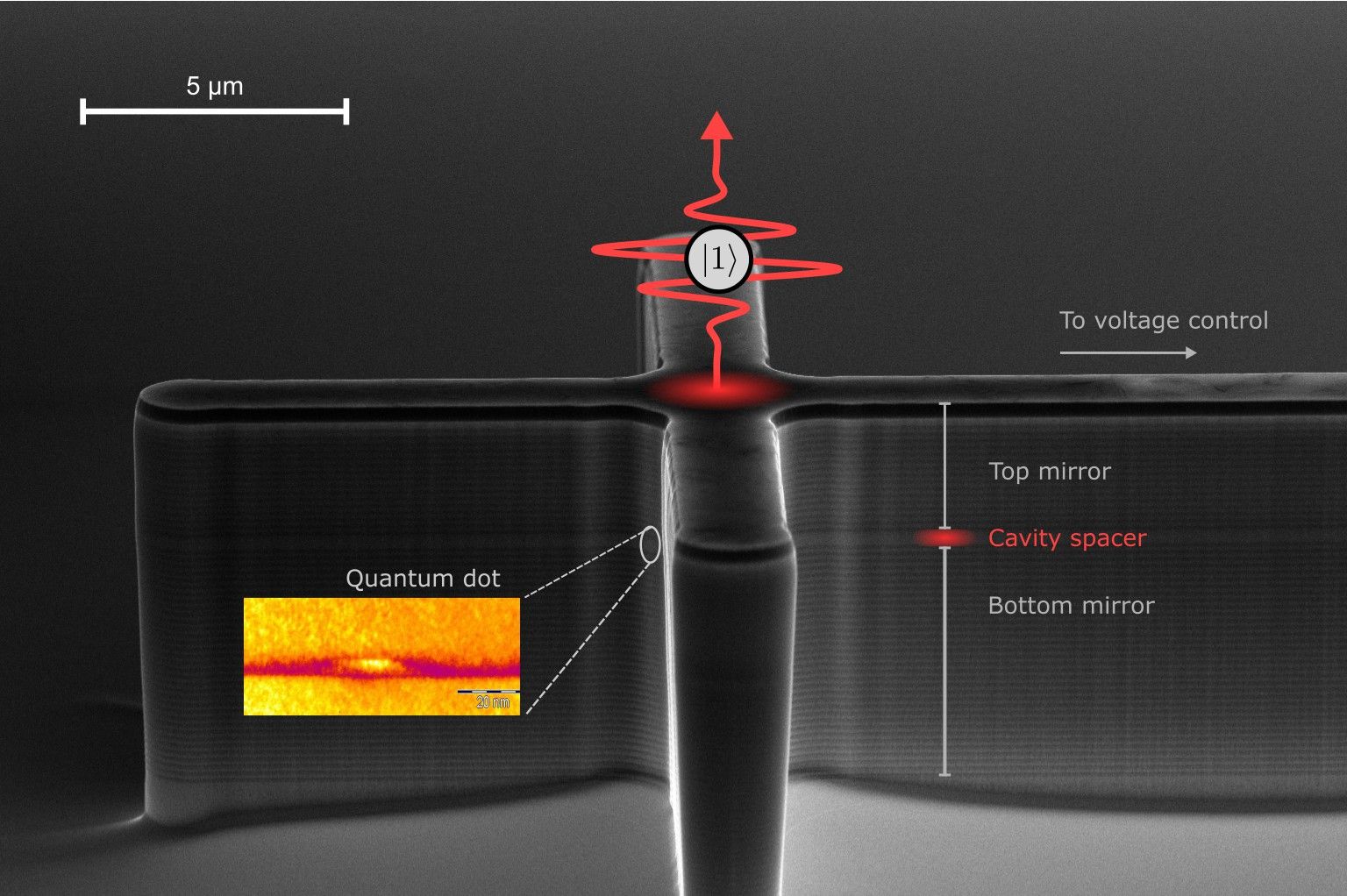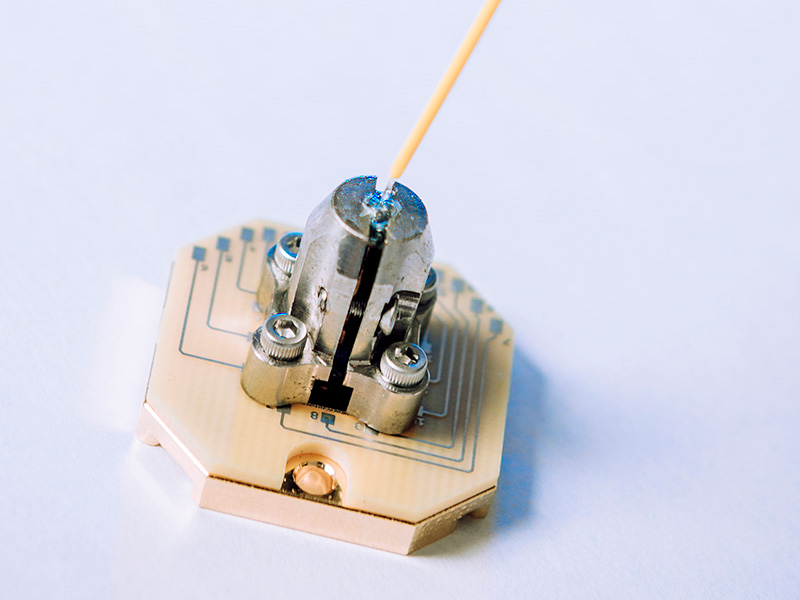The Power of Single Photons
Discover our quantum dots
Quantum dots are at the heart of Quandela's groundbreaking single-photon technology
Single photons and quantum technology
What are Single photons?
Single photons are the fundamental particles of light – the smallest possible units of electromagnetic radiation. They represent the “quantum of light,” a concept that played a pivotal role in the development of quantum theory which now offers an ideal framework for quantum computing thanks to Quandela unique Single Photon source technology.
In 1900, Max Planck introduced the revolutionary idea that energy is quantized, occurring only in discrete packets. Albert Einstein further developed this concept in 1905, proposing that light itself consists of discrete quanta, which we now call photons. This groundbreaking insight helped explain phenomena like the photoelectric effect and laid the foundation for our modern understanding of quantum mechanics.
Single photons embody the wave-particle duality central to quantum physics. They can behave both as particles and as waves, exhibiting properties like superposition and entanglement that defy classical intuition. Single photons are by nature robust carriers of quantum information, opening up new possibilities in the fields of quantum computing and quantum communication.
The ability to generate, manipulate, and detect individual photons marked the beginning of the “second quantum revolution,” where we can harness quantum effects for practical applications. The first Bell tests were performed with single photons, proving experimentally that quantum mechanics is indeed incompatible with local realism
Today, by leveraging single photons as flying qubits, Quandela's technology enables the creation of powerful quantum computers that will one day perform complex calculations and simulations beyond the reach of classical systems.
Quantum Dot Technology for Single-Photon Sources
Generating photons with quantum dots
Quantum dots are at the heart of Quandela's groundbreaking single-photon technology. These tiny semiconductor structures, often called "artificial atoms," are the key to producing high- quality, on-demand single photons.
How quantum dots work:
- Electron confinement: Quantum dots trap electrons in a nanoscale space, creating discrete energy levels similar to those in atoms.
- Excitation: A short laser pulse excites an electron to a higher energy state.
- Relaxation and emission: As the electron returns to its ground state, it releases a single photon with precise properties.
- Directed output: Advanced cavity designs ensure the photon is emitted in a specific direction for easy collection.
Advantages of Quandela's quantum dot technology:
- Deterministic emission: Quantum dots can produce single photons on-demand when and as they are needed.
- High purity: Unlike other methods, the probability of emitting multiple photons at once is extremely low, ensuring true single-photon states.
- Indistinguishability: Photons produced by the same quantum dot are nearly identical which is crucial for quantum interference effects.
- Brightness: A high percentage of generated photons can be collected, boosting overall efficiency.
- Scalability: The solid-state nature of quantum dots allows for miniaturization of the single-photon sources enabling integration of a large number of devices.
By precisely controlling the quantum dot environment and leveraging the Purcell effect in specially designed optical cavities, Quandela achieves unparalleled performance in single- photon generation. This technology opens the door to practical, large-scale photonic quantum computing and other cutting-edge quantum applications.

Quantum Dot-Based Single Photon Source Fabrication
Fabricating Single Photon Sources
Quandela's innovative approach to creating ready-to-use single photon sources involves a precise and sophisticated fabrication process:
- Quantum Dot Growth: We begin by growing semiconductor quantum dots using advanced epitaxial techniques. These nanoscale structures are carefully engineered to emit photons at specific wavelengths.
- Micropillar Fabrication: A key innovation is our method of deterministically placing quantum dots at the center of microscopic pillars. These pillars, made from alternating layers of semiconductors, act as optical cavities that enhance photon emission and collection.
- Cavity Optimization: The micropillar's dimensions and material composition are finely tuned to create a highly efficient optical cavity. This design leverages the Purcell effect to boost photon emission into a preferred direction.
- Electrical Contacts: We integrate electrical contacts into the structure, allowing precise control over the quantum dot's emission properties through applied voltages.
- Fiber Coupling: Finally, we permanently attach (or "pig-tail") an optical fiber to each high-performance micropillar device. This creates a robust, alignment-free interface between the quantum dot source and standard fiber optic systems.

The result is a compact, efficient, and ready-to-use single photon source that can be easily integrated into quantum photonic systems or experiments. This unique fabrication process enables Quandela to produce high-performance single photon sources at scale, paving the way for practical quantum photonic technologies.
